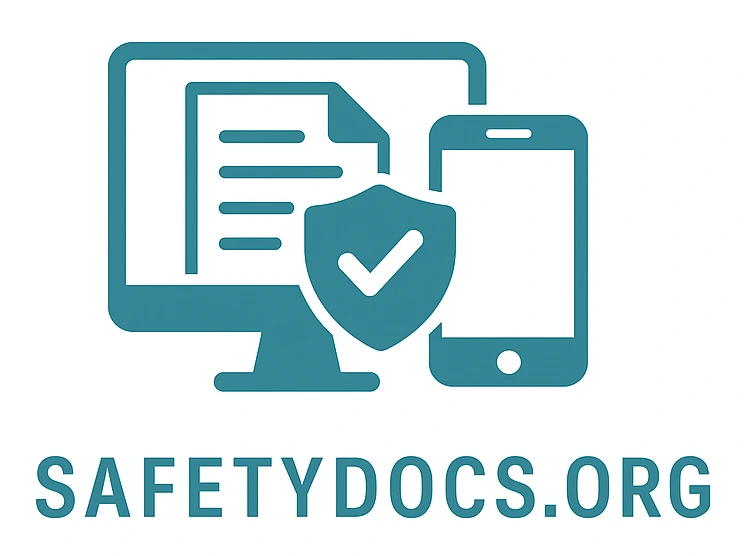How It Works
Make A Plan Today..
Your family may not be together if a disaster strikes, so it's vital to know which types of emergencies could affect your area — from flooding or power outages to major incidents or terrorist attacks.
Know how you'll contact one another and reconnect if separated, and establish a family meeting place that's familiar, well-lit, and easy to find.
Four Simple Steps to Safety
Create a comprehensive family emergency plan
Step 1: Put a plan together
Discuss the questions below with your family, friends or household to start your emergency plan.
Ask yourselves:
How will we receive emergency alerts and warnings? (TV, radio, GOV.UK alerts, local authority notifications, or the ProtectUK app)
What is our shelter plan — do we stay put or move to safety?
What is our evacuation route if we need to leave home or work quickly?
What is our household communication plan if networks are down?
Do we need to update our emergency kit or digital documents (insurance, ID, medical details, etc.)?
Step 2: Consider specific needs in your household
Tailor your plans and supplies to your family's everyday living needs and responsibilities.
Think about:
Different ages and mobility levels within the household
Regular locations (school, workplace, care facility) and how to reunite
Medical needs, prescriptions and essential equipment
Languages spoken, cultural or religious considerations
Households with school-aged children
Responsibilities for assisting older relatives, children or neighbours
Dietary and allergy requirements
Disabilities or functional needs — plan for power cuts or lift failures
Pets or service animals — food, leads, carriers and ID tags
Create a support network of people you trust who can help with communication, childcare or specialist care if needed.
Step 3: Create a Family Emergency Plan
Make your Family Emergency Plan quickly and easily with our digital fillable form.
Record key contacts (family, friends, GP, insurance, local council)
Map primary and secondary meeting points (home, local safe zone, out-of-area contact)
Store copies of passports, insurance and medical information securely — digital and paper
Include emergency actions for fire, flood, severe weather, terrorism alerts and power loss
Make a Family Emergency Plan on SafetyDocs using our templates →
Step 4: Practice your plan
Rehearse it with your household at least twice a year.
Test your communication methods — including backup options if phones fail
Practice evacuating by day and night
Show children how to dial 999 and how to recognise trusted adults
Check your emergency kit and refresh batteries, water and food supplies
Review and update your plan after major changes (new job, school, pet, home move)
Helpful Tools & Resources
Stay informed with official guidance and support
ProtectUK Guidance
Official advice on staying safe in national emergencies
Environment Agency Flood Alerts
Real-time flood warnings and information
UK Government — Emergency Alerts
Get emergency alerts on your mobile phone
British Red Cross — Get Prepared
Expert guidance on emergency preparedness
Local authority resilience pages
Find local evacuation points and community hubs

About the Plan
Why Every Family Needs a Safety Plan
Emergencies don’t wait — but being prepared can make all the difference.
SafetyDocs helps you organize, store, and access your essential family safety information in one secure digital space.
Whether it’s a power outage, a flood, or a family trip — your plan is always within reach.
How It Works
Simple Setup, Complete Peace of Mind
Subscribe
Create your SafetyDocs Family Plan account.
Add Family Members
Up to 5 profiles included.
Customize Your Plan
Fill in your emergency templates and upload important docs.
Access Anytime
Online or offline, all your info in one secure dashboard.
Simple, Transparent Pricing
One plan. Everything you need to keep your family safe.
Family Plan
£6.99/month
Complete protection for you and your loved ones
Up to 5 family members included
Unlimited emergency plans & documents
Real-time family alerts & coordination
Secure encrypted storage
24/7 offline access on all devices
Travel safety documentation
Medical emergency records
Community resilience features
Regular updates & new features
Priority customer support
14-day free trial • No credit card required • Cancel anytime
TESTIMONIALS
Trusted by Families Nationwide

Laura M., Family of Four
We set up our plan in 20 minutes. Now everyone knows what to do if there’s an emergency


Laura M., Family of Four
This is the digital safety binder we didn’t know we needed.

READY TO GIVE US A TRY?
Ready to Protect Your Family?
Join thousands of families who trust SafetyDocs to keep their loved ones safe and prepared.

